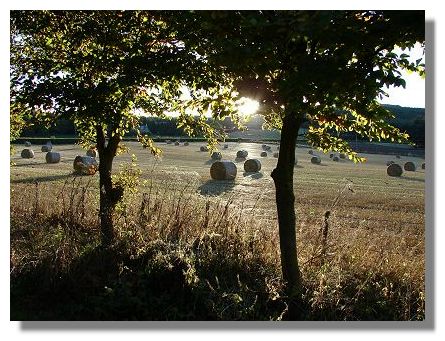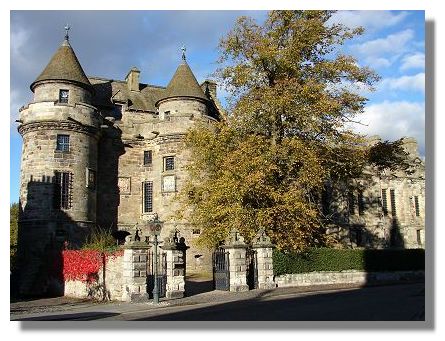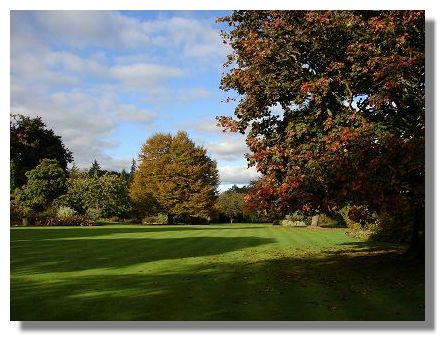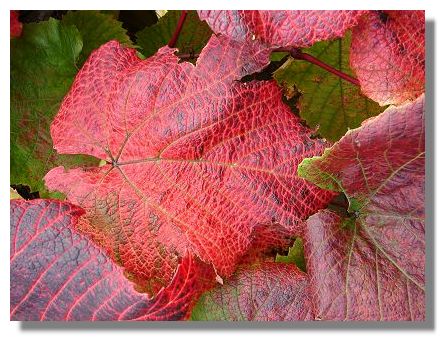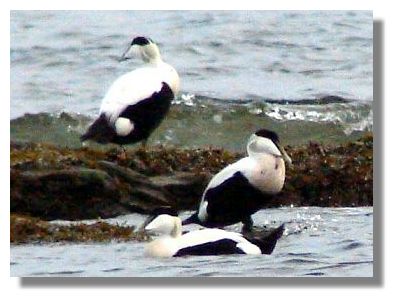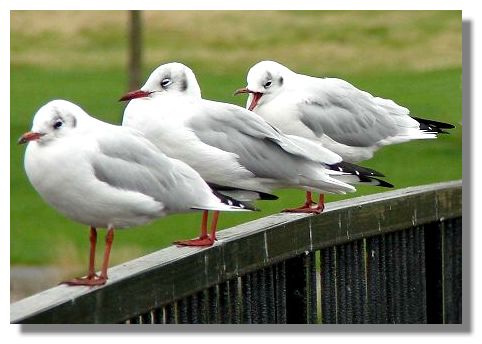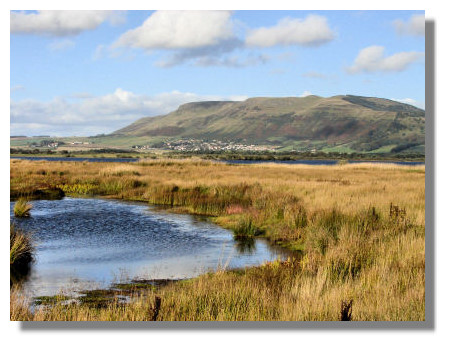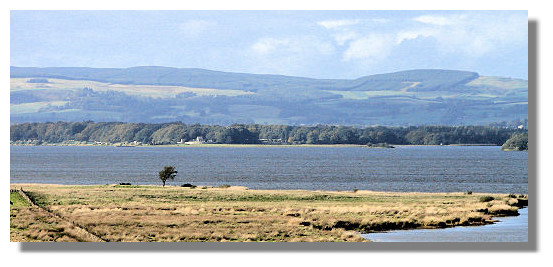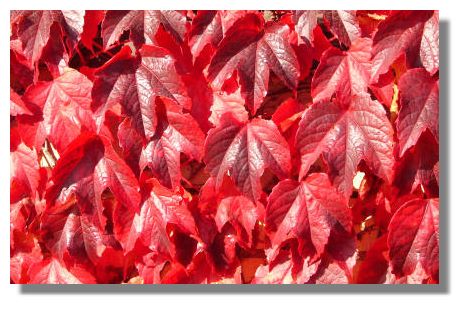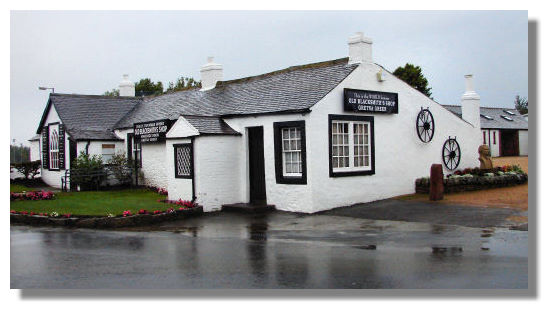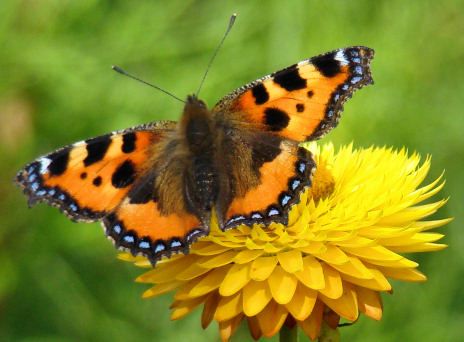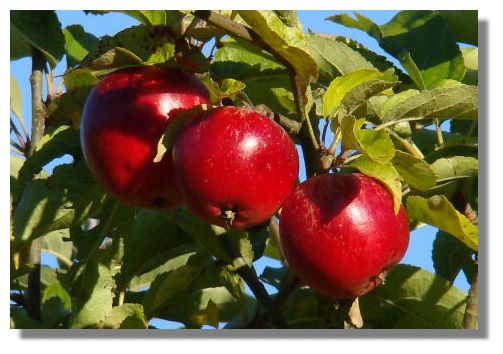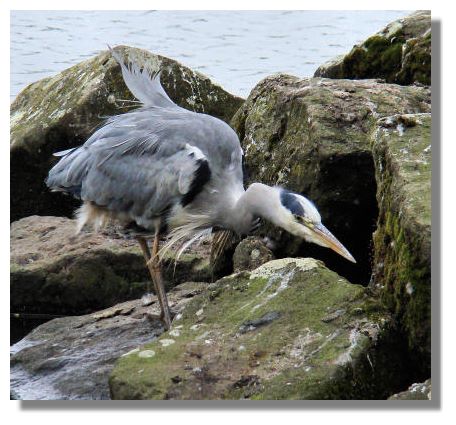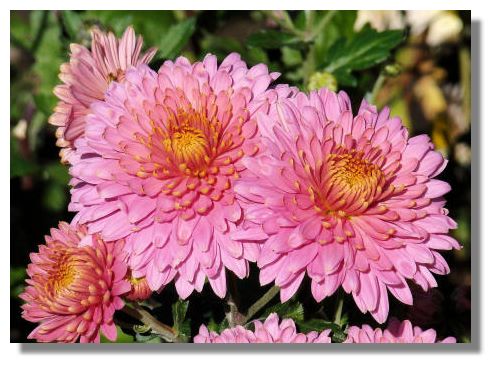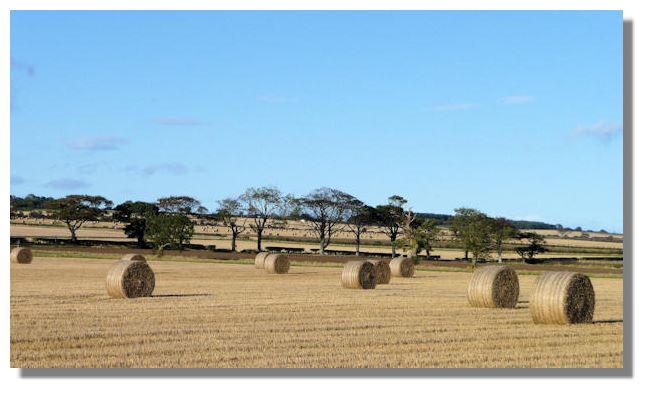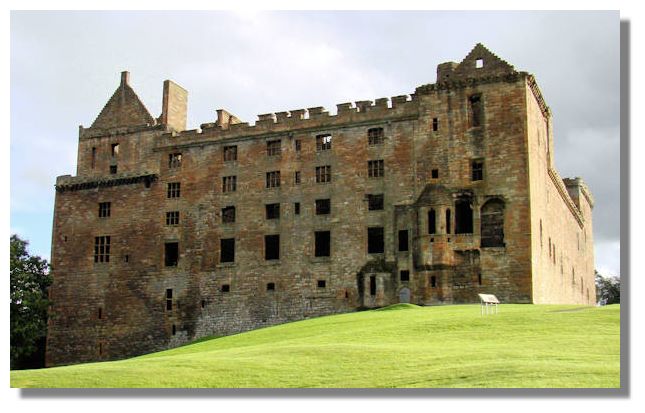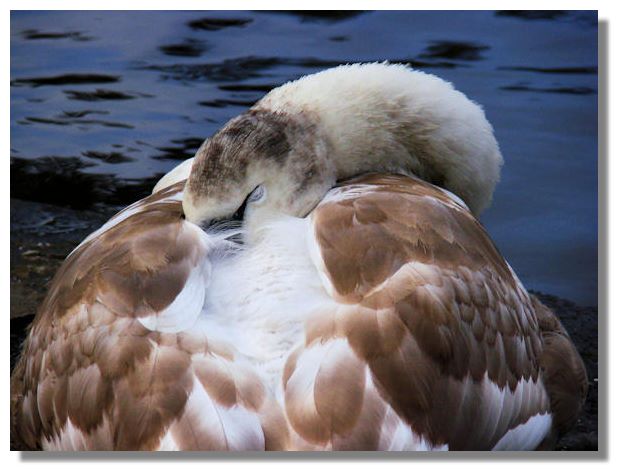Perhaps the most appropriate picture to illustrate the weather in Scotland would be heavy rain or at least thick cloud. But the sun does appear and due to its rarity, it is perhaps more appreciated! This photo is of a field near the Fife village of Falkland after the wheat has been harvested. These days, the straw is rolled up into these large, round bales. The shimmer seen running across the field towards the sun is caused by reflections on a mass of spider silk which covered the whole of the field.
Falkland Palace is the more usual view of this Fife hamlet - though as it frequently wins competitions for being an attractive village, there are plenty other sights to see there. The late afternoon sunshine is highlighting the bright red of the ivy on the wall beside the entrance.
There are autumn tints visible on the trees in this view of the attractive garden area at Falkland Palace.
Vines for the production of grapes need to be grown under glass in Scotland but some varieties of this decorative plant grow happily outside. This Vine ("Vitis Cognetiae" according to its label) is grown mainly for its large, vividly coloured leaves in autumn.
These male eider duck, with their striking black and white markings, with a tinge of green on the side of the head, were settling down for the night on rocks some distance from the shore at Carnoustie, Angus when this photograph was taken.
Why is it that gulls always look as though they are complaining? The one on the right could be saying: "I told you we should have gone away for the October holiday week and avoided all that rain...."
The village of Scotlandwell, nestling under Bishop Hill, in Perth and Kinross, is the home of the Scottish Gliding Club at Portmoak Airfield. Gliders can often be seen using the up-currents of the hill. A bridge over the river Leven at Portmoak, before it goes into the loch at Scotlandwell, was mentioned in a charter of 1152 - the first documented reference to a bridge in Scotland.
This view of Loch Leven (with its castle - just visible on the island across the water) was taken from the visitor centre at the RSPB nature reserve at Vane Farm. Loch Leven is Scotlandís largest lowland freshwater loch and supports a huge waterfowl population. This includes the largest concentration of breeding freshwater duck in Britain and up to 20,000 pink-footed geese in winter.
Autumn colours are now appearing in profusion. This bright, red ivy was seen growing over an electricity sub-station in Glasgow!
The pictures in this feature are often those taken a bright or sunny day. So, for a change, here is one of the historic Smithy at Gretna Green, in pouring rain - I was under a large golf umbrella while taking it. Gretna is the first town in Scotland on the old road from England. In 1754, an act was passed which required parental consent for marriage by anyone under the age of 21 in England. In Scotland, the age of consent was (and still is) 16. So young lovers from England sometimes eloped to just over the Scottish border at Gretna - and were married over the anvil at the Smithy, by the local blacksmith. Gretna Green has been a haven for romantic lovers for more than 250 years as a result, with couples travelling for days by horse and coach. These days, they fly in from all over the world - of the 7,500 weddings in Scotland each year where both bride and groom are non-residents, 50% take place at Gretna!
Helichrysum, the so-called "Everlasting" flowers, have papery-like petals. But that didn't seem to put off this Small Tortoiseshell butterfly - there must still be nectar to be had in there.
It takes a while for apples and pears to reach maturity in Scotland but these juicy red ones look ripe for eating in mid-October. And the windfall apples that fall to the ground provide a food source for both birds and butterflies such as the Red Admiral.
This Heron was hunched intently over a rock pool at Hogganfield Loch in Glasgow, waiting patiently for any passing fish. It was a dull, grey day, when this photo was taken so the bird was well camouflaged.
These bright, colourful chrysanthemums, photographed on a sunny day in the walled garden at Culzean Castle Country Park, are in marked contrast to the previous picture.
After so much rain in August and September, farmers struggled to harvest the cereal crops. Eventually, somehow, they have managed to complete the task and the round bales of the stalks dot the landscape in Fife. In the old days, there would have been long lines of ten or twelve sheaves propping each other up in "stooks" - great for kids to crawl through!
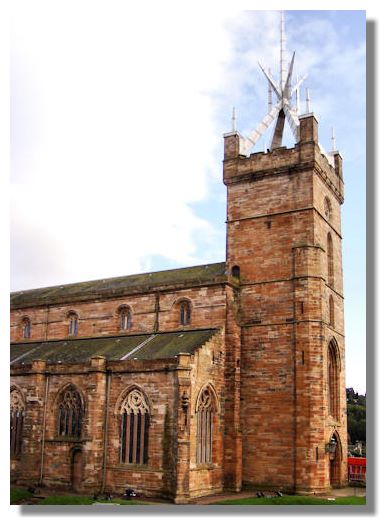
St. Michael's Parish Church in Linlithgow is one of the largest burgh churches in the Church of Scotland. St Michael is the town's patron saint and the town's motto is "St Michael is kind to strangers". King David I of Scotland granted a charter for the establishment of the church in 1138. Most of the present building dates from the mid-15th century, with extensive restorations in the 19th century. Being adjacent to Linlithgow Palace, the church was much favoured as a place of worship by Scottish Kings and Queens. Mary Queen of Scots was born in Linlithgow Palace on 8th December 1542 and was baptised in St Michaelís Church. In 1964, an aluminium crown was controversially installed, apparently echoing the "crown of thorns".
Linlithgow is only 16 miles west of Edinburgh and halfway to Stirling Castle. It has had a long association with royalty - King David I founded the burgh and a royal manor house existed there in the 12th century. King James I, who had just returned from exile in England 1424, began the palace that we see today. Succeeding monarchs added their own embellishments, particularly King James IV. His son, King James V, was born in Linlithgow Palace and later in his life he also did much to improve the royal residence, in part to impress foreign royalty. When he married the French Mary of Guise-Lorraine in 1537, she is reported to have compared Linlithgow Palace to the noblest châteaux of France.
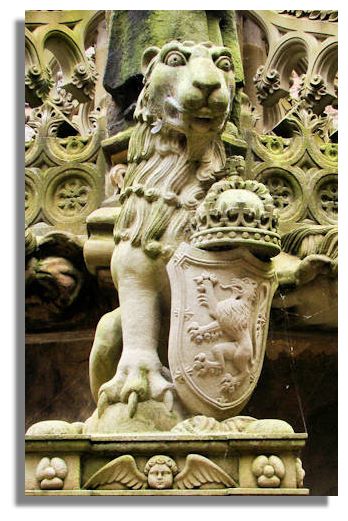
It was King James V who was responsible for the magnificent fountain in the courtyard at Linlithgow Palace. It is now Britain's oldest surviving fountain and was commissioned in the late 1530s. Designed to resemble a crown, with a large number of symbolic figures ranged around it, the "King's Fountain" was created to impress visiting monarchs and dignitaries with the opulence of King James' court. Over the centuries the fountain deteriorated - the ravages of the open air and flowing water (and red wine when Bonnie Prince Charlie called in 1745. Historic Scotland undertook a major renovation between 2002 and 2005. As much of the original stonework as possible was retained and new high-quality stone carvings were made to replace those which were no longer viable. The result is a bit of a patchwork of old and new at the moment, but in time the new stone is mellowing.
The pink trumpets of Nerine create a bright splash of colour in the late autumn in Scotland. These bulbous perennials originate from South Africa, but "Nerine bowdenii" are hardy enough for the Scottish climate. The wavy petals of the trumpets come in clusters, on graceful stems, with individual flowers about 1½" (4 centimetres) across. The blooms are long lasting and the leaves - which follow on afterwards - don't die down until the spring.
The little bundles of fluffy cygnets that were hatched only a few months ago have grown fast, feeding on just aquatic plants and other vegetation. They are now almost as large as their parents (swans are one of our largest birds) and the initial brown feathers are beginning to give way to the white of adult swans.
If you want to look back at other editions of these photos of Scotland week by week, there is an Index Page
